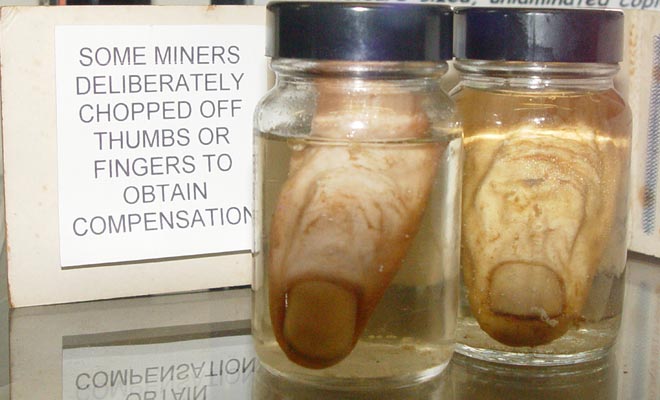
Losing a thumb in a workplace accident was worth £400 (the cost of a small house) in compensation to a miner in the 1920s. As a result, hard-up men sometimes arranged for a friend (such as a butcher) to cut off one of their thumbs. Miners' wages were not high at the time, and the money was often used to build or repair their homes or to pay off gambling or pub debts. Eventually the mining company's insurers refused to pay out on neatly severed thumbs, so the miners began to use detonators, sometimes with horrific effects.
Two severed thumbs are preserved in the museum at Waihī, where a large goldmine has operated since the 19th century.
Te whakamahi i tēnei tūemi
Waihi Gold Mining Museum and Art Gallery
This item has been provided for private study purposes (such as school projects, family and local history research) and any published reproduction (print or electronic) may infringe copyright law. It is the responsibility of the user of any material to obtain clearance from the copyright holder.






Tāpiritia te tākupu hou